Top-rated entry-level DSLRs for all kinds of shooting.
Entry-level DSLRs are a great investment for anyone who wants to become a professional photographer or learn more about it. They are versatile, durable, and come with many features that make them a perfect choice for beginners.
The best entry-level DSLR for you will depend on your specific needs and preferences. But by considering factors like sensor size, type of sensor, and even rare options like the micro four-thirds system, you'll be able to make an informed decision and choose a camera that will help you take better photos and learn the art of photography.
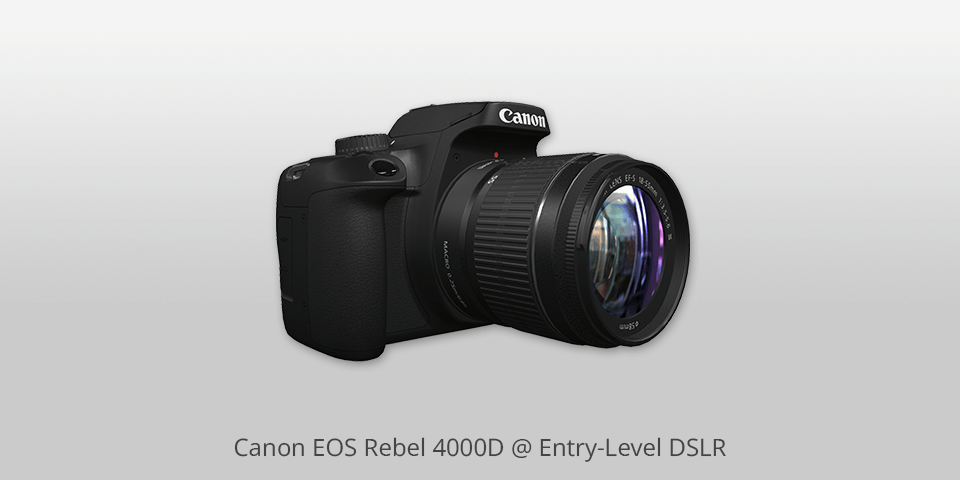
Megapixels: 18MP | Max continuous shooting speed: 3fps | Video: HD
As a photographer, I've had the opportunity to use the Canon EOS Rebel 4000D entry-level DSLR and I have to say, it's a decent camera for photography for beginners. It offers good value for money and has some great features like full HD video and easy-to-use controls.
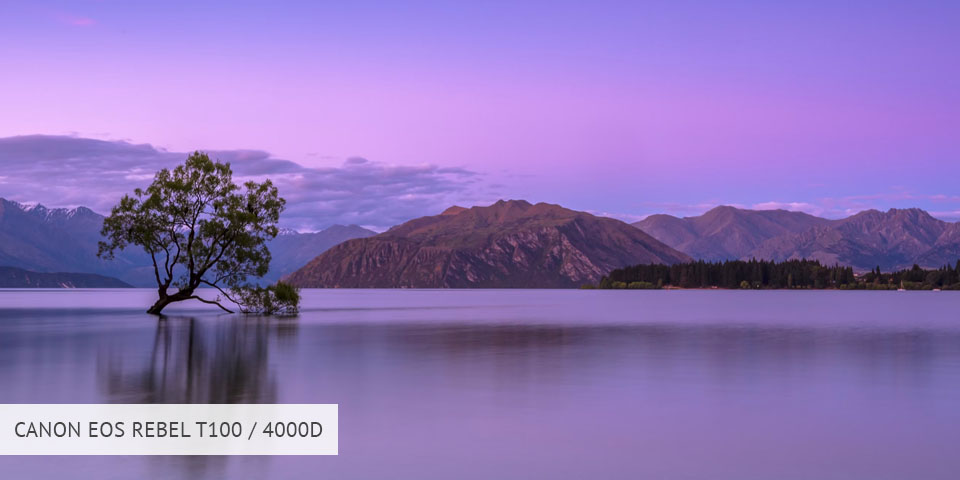
One of the main advantages of the 4000D is its image sensor. It can capture images with good color accuracy, which is important for delivering high-quality photos. The AF system is also fast and accurate, making it easy to lock on to your subject in live view.
However, there are some cost-saving decisions that Canon has made in order to make this camera as affordable as possible. For example, they have used a plastic lens mount and printed labels next to the buttons instead of directly on them.
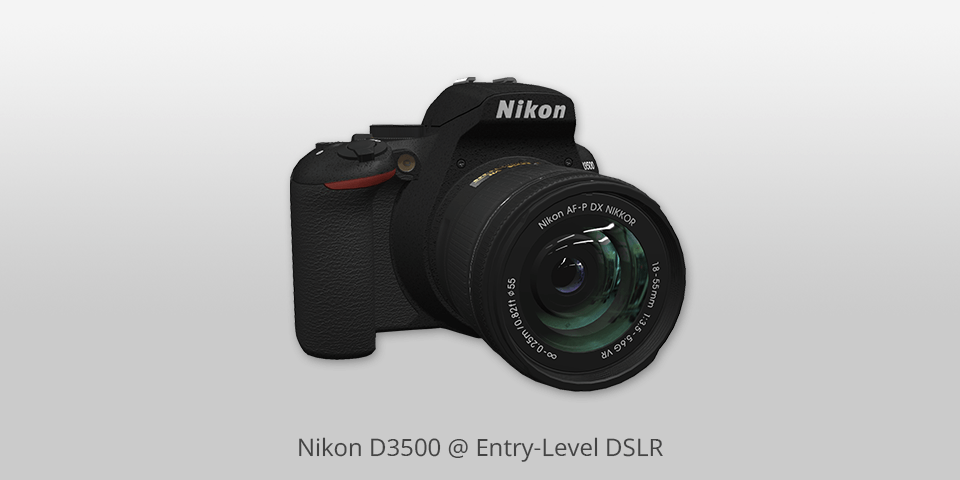
Megapixels: 24MP | Max continuous shooting speed: 5fps | Video: Full HD
Nikon D3500 is designed to be simple and easy to use, which is great for beginners. The menu system is intuitive, and there's even a guide mode to help you understand how to make your images look good.
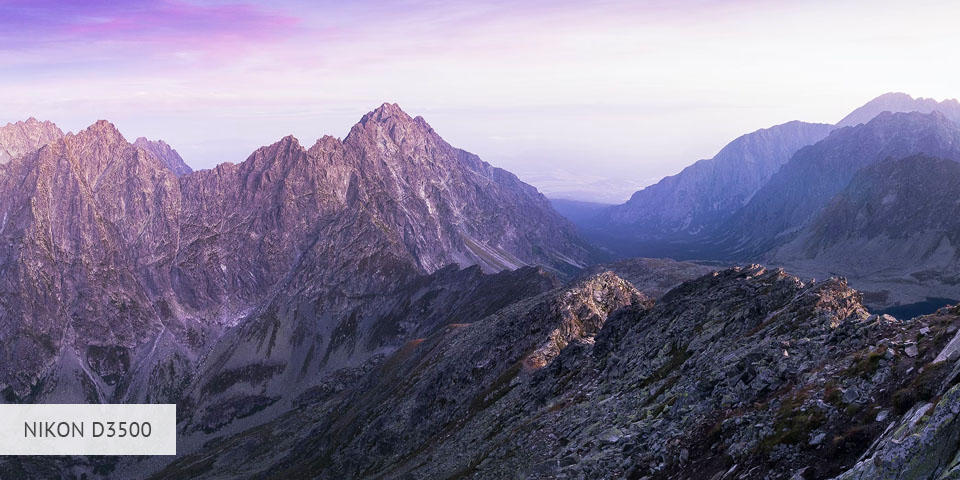
The camera has a 24.2-megapixel CMOS image sensor that captures high-quality photos in a variety of lighting conditions. The images produced by this Nikon camera are sharp, vibrant and well-exposed, especially at lower ISOs where noise is reduced effectively.
One disadvantage of this starter DSLR is its autofocus system, which remains unchanged from the D3400 predecessor. It has an 11-point AF system that is clustered around the middle of the frame. This is fine for single-shot AF but can be less responsive when shooting in continuous AF tracking mode or when using the Live View mode.

Megapixels: 24MP | Max continuous shooting speed: 6fps | Video: Full HD
The 24-megapixel APS-C CMOS sensor produces finely detailed images, and the hybrid AF in Live View provides advanced functionality. Additionally, the camera's optical viewfinder offers a 100% field of view and nearly 0.95x magnification, which makes it easier to compose images in various situations.

Another great feature of this Pentax camera is the high-precision SAFOX X AF system with 11 sensors, which provides dependable autofocus operation during both still and video shooting.
It's also great that this camera can be used with a smartphone or tablet computer through its wireless LAN (Wi-Fi) capability, making it easy to remotely check the camera's Live View image, capture still images, and adjust settings through a mobile device.
However, there are some disadvantages to this DSLR for beginner. One of the main issues is the lack of lens selection compared to other DSLRs on the market. Additionally, the user interface can be a bit confusing, especially for beginners.
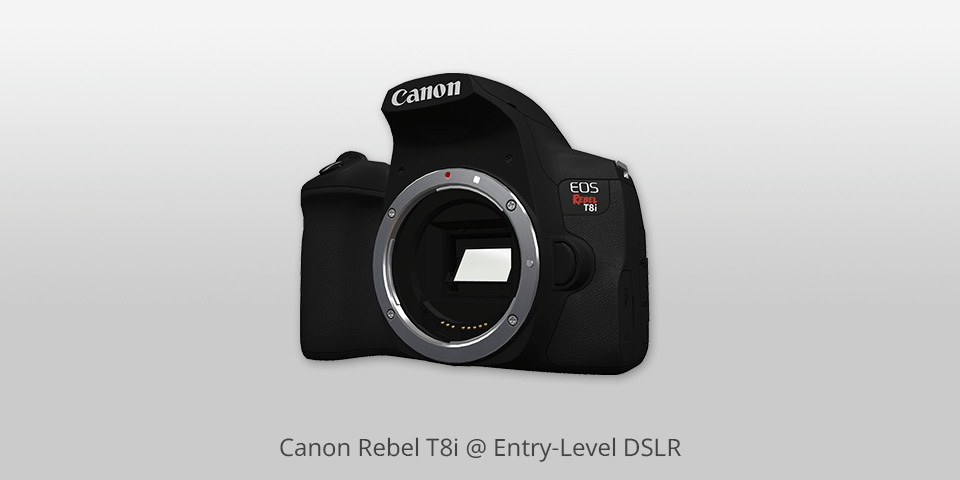
Megapixels: 24MP | Max continuous shooting speed: 7fps | Video: 4K
As a photographer, I have had the opportunity to test the Canon Rebel T8i entry-level DSLR and I must say, it's a pretty good beginner camera for what it's worth. The T8i comes with a 24-megapixel sensor, a high-resolution touchscreen interface, and a high frame rate which makes it a great option for casual photographers.
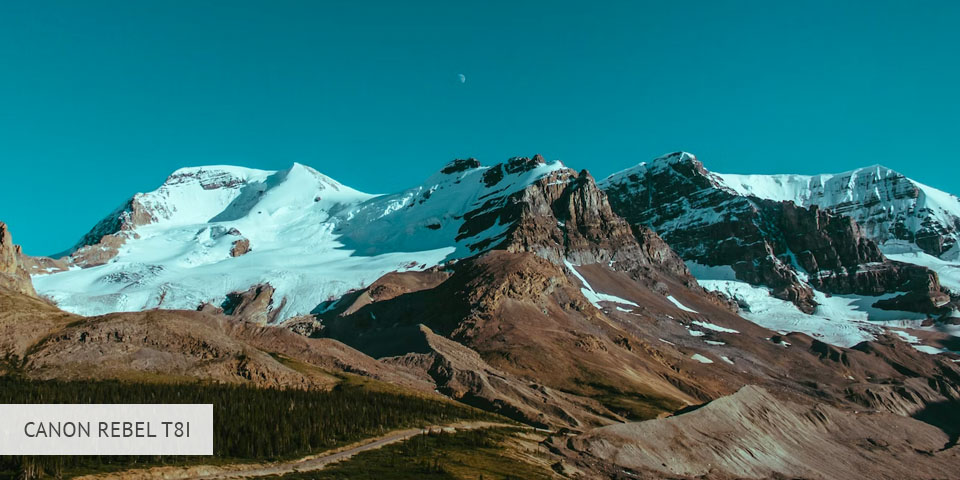
One of the main advantages of the T8i is its compatibility with Bluetooth, which means you can easily connect it to your smart devices and transfer files wirelessly using the free Canon Camera Connect app.
The camera also has a long list of useful features, including a variety of creative filters, Scene modes, and automatic shooting modes that can help you get better photos and videos.
However, there are a few downsides to the T8i that I must mention. Firstly, the camera's optical viewfinder is not particularly impressive, although it's still a pretty good one for an entry-level camera. Secondly, the T8i's autofocus system is not as advanced as some of the more expensive professional models and can sometimes struggle to keep up with fast-moving subjects.
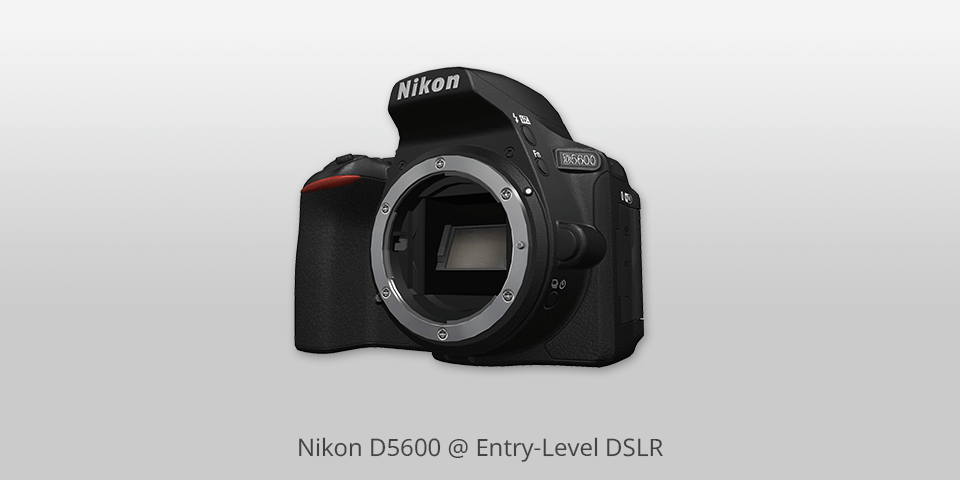
Megapixels: 24MP | Max continuous shooting speed: 5fps | Video: Full HD
One of the main advantages of the Nikon D5600 is its SnapBridge connectivity feature, which allows for easy transfer of photos from the camera to your smartphone. This is a great feature for those who want to quickly share their photos on social media or with friends and family.
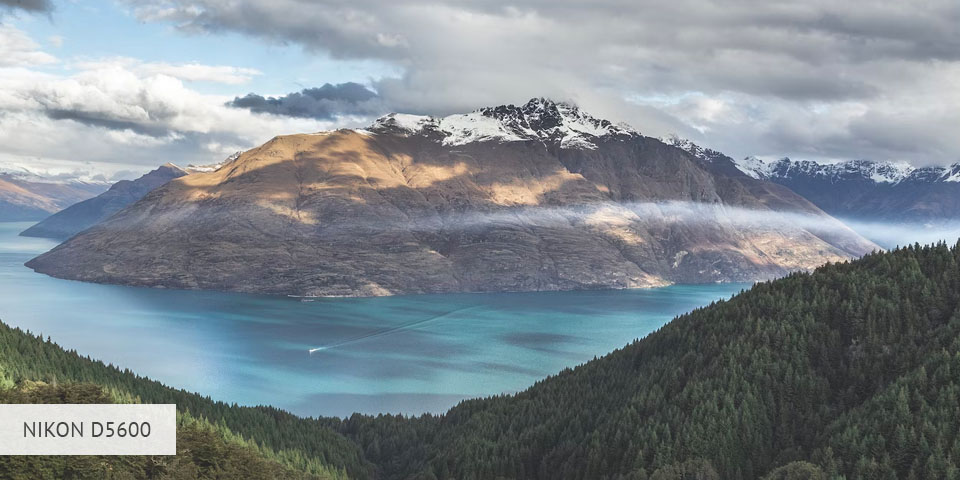
In terms of image quality, the D5600 does an excellent job of preserving the full resolution of the sensor in JPEG files, while raw images display vibrant colors and high dynamic range. This DSLR camera for beginners also features a time-lapse function, which is a great way to compress long periods of time into short ones entirely within the camera.
However, there are also some disadvantages to this camera for amateur photographers. One of the main problems I've encountered is the video clip limit, which is only 10 minutes for 1080p60 at High Quality and 20 minutes for 1080p60 at Normal Quality. This can be frustrating for those who want to record longer videos.
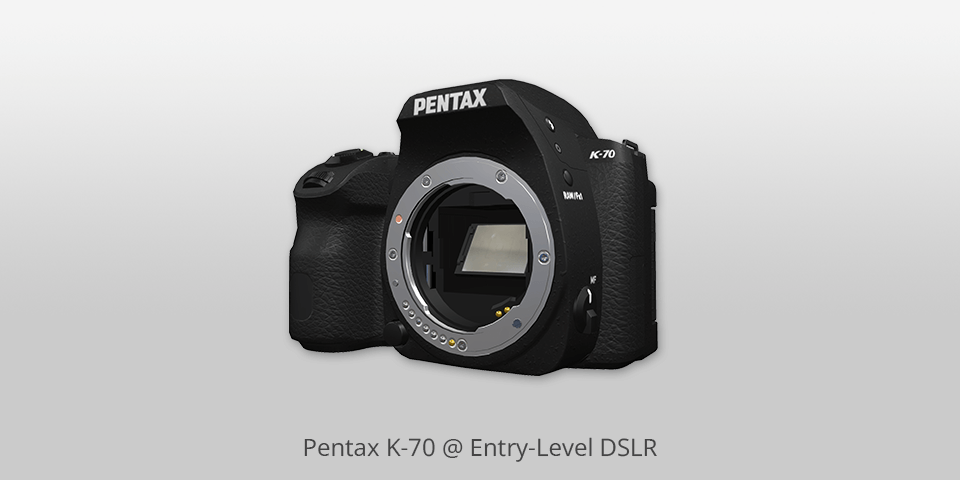
Megapixels: 24MP | Max continuous shooting speed: 6fps | Video: HD
First off, I have to say that this entry-level DSLR is well-designed and ergonomically pleasing, making it comfortable to hold and use. It boasts impressive specifications and lots of desirable features that will appeal to traditional still photographers.
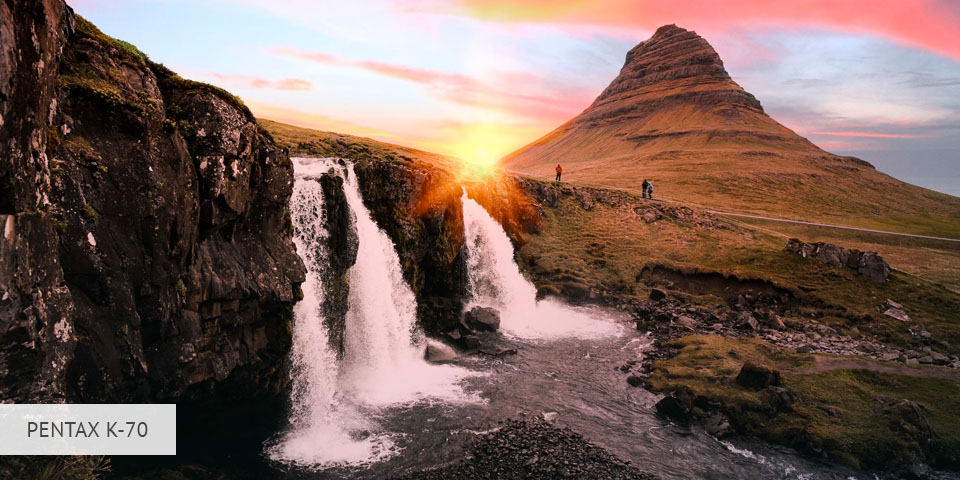
One of the key advantages of the K-70 is its excellent image quality thanks to a 24-megapixel APS-C sensor with 14-bit RAW files and a wide ISO range of 102,400. This camera also employs Pixel Shift Resolution technology and an improved anti-shake system to provide better low-light performance.
However, there are a few downsides to this camera. One problem of usage is that the autofocus is not as sharp as some other modern Pentax AF systems, but it still does a decent job. Additionally, a slight underexposure is often noticeable in darker scenes, and it's a good idea to dial back the default settings if you want a more natural look.
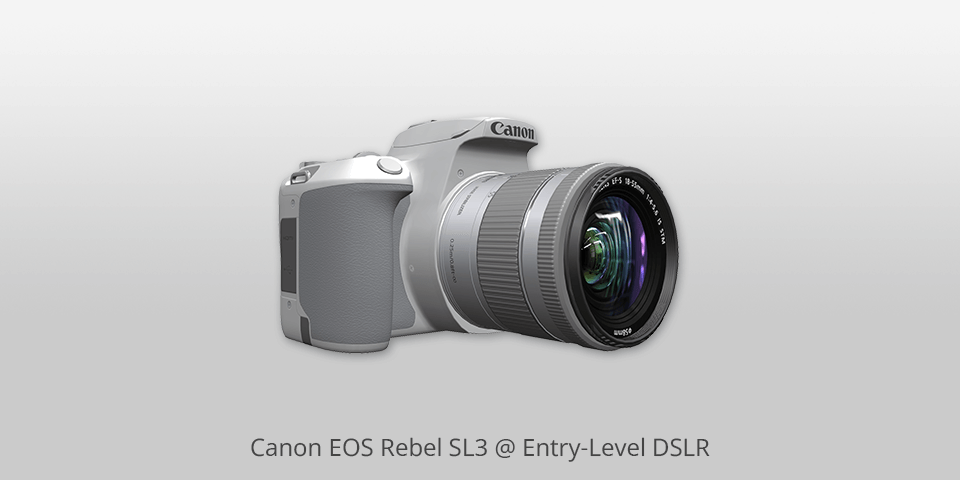
Megapixels: 24MP | Max continuous shooting speed: 5fps | Video: 4K
One of the main advantages of this Canon camera is its impressive battery life, which is rated at 1070 shots on a single charge, a rarity in the market.
Additionally, the SL3's image quality is excellent for its class, thanks to its high-resolution 24.1-megapixel CMOS sensor and DIGIC 8 image processor. This combination gives the camera the ability to capture high-quality images even in low light.

Another great feature of this DSLR for beginners is its autofocus system with Dual Pixel AF, which is a much faster way to focus than the conventional 'contrast AF' method used by many other cameras in live view mode. The SL3's Dual Pixel AF uses two photosite sensors on the sensor, which are split in half when you switch to live view, in order to check distance. This makes it a great camera for portrait and action photography.
However, there are some limitations to the SL3's capabilities. For example, its sensitivity range is not as wide as some other DSLR cameras, so you might have to take the risk of using high ISO settings when shooting in poor lighting conditions.
Additionally, the SL3's AF system is not as effective as some higher-end models, which might limit its use in certain situations.
| IMAGE | NAME | FEATURES | |
|---|---|---|---|

|
Canon EOS Rebel 4000D
OUR CHOICE
|
CHECK PRICE → | |

|
Nikon D3500
FULL HD
|
CHECK PRICE → | |

|
Pentax KF
WATERPROOF
|
CHECK PRICE → |
Every beginner photographer has problems selecting a camera. Check the size of the sensor, megapixels, diverse modes, shooting speed, manual controls, and, of course, the price.
Price. Keep in mind that together with the body of the camera, you will buy additional accessories. That’s why the price is one of the main criteria you have to pay attention to, and sometimes it makes sense to buy a cheap camera and invest more in a lens.
While purchasing the best entry-level DSLRs, you will probably need to buy a camera backpack, a tripod, lenses, and other equipment.

Sensor size. In order to make the shooting process even more pleasant and enjoyable, I recommend picking devices with smaller sensors, for example, cropped-sensor cameras. Such cameras are lighter, smaller, and more convenient and practical to use.
Image stabilization. This feature helps you take sharp photos, even when shooting at slow shutter speeds or using a tripod. Look for a camera with features like a shutter speed preview mode and a mechanical sensor that reads the movement of the camera and adjusts the sensor accordingly.
Frames per second. This parameter matters a lot for photographers looking for the best budget video camera. If you can record many frames per second, you’ll get a chance to capture even fast-moving objects.
Ergonomics. You want a camera that feels comfortable in your hands and is easy to use. Look for a starter DSLR with a good grip, intuitive controls, and a responsive autofocus system.
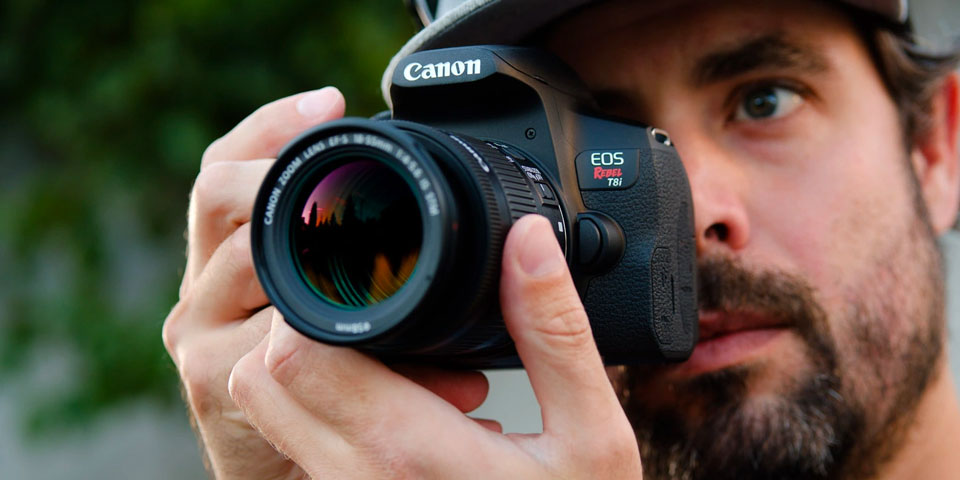
Brand. Canon and Nikon are the market leaders, but Pentax is also producing some interesting models. Look for a camera that has features that make it easy to use, such as a tilting LCD and an electronic viewfinder.
Also, look for cameras that have Wi-Fi and NFC connectivity, which makes it easy to transfer photos to your smartphone or tablet.